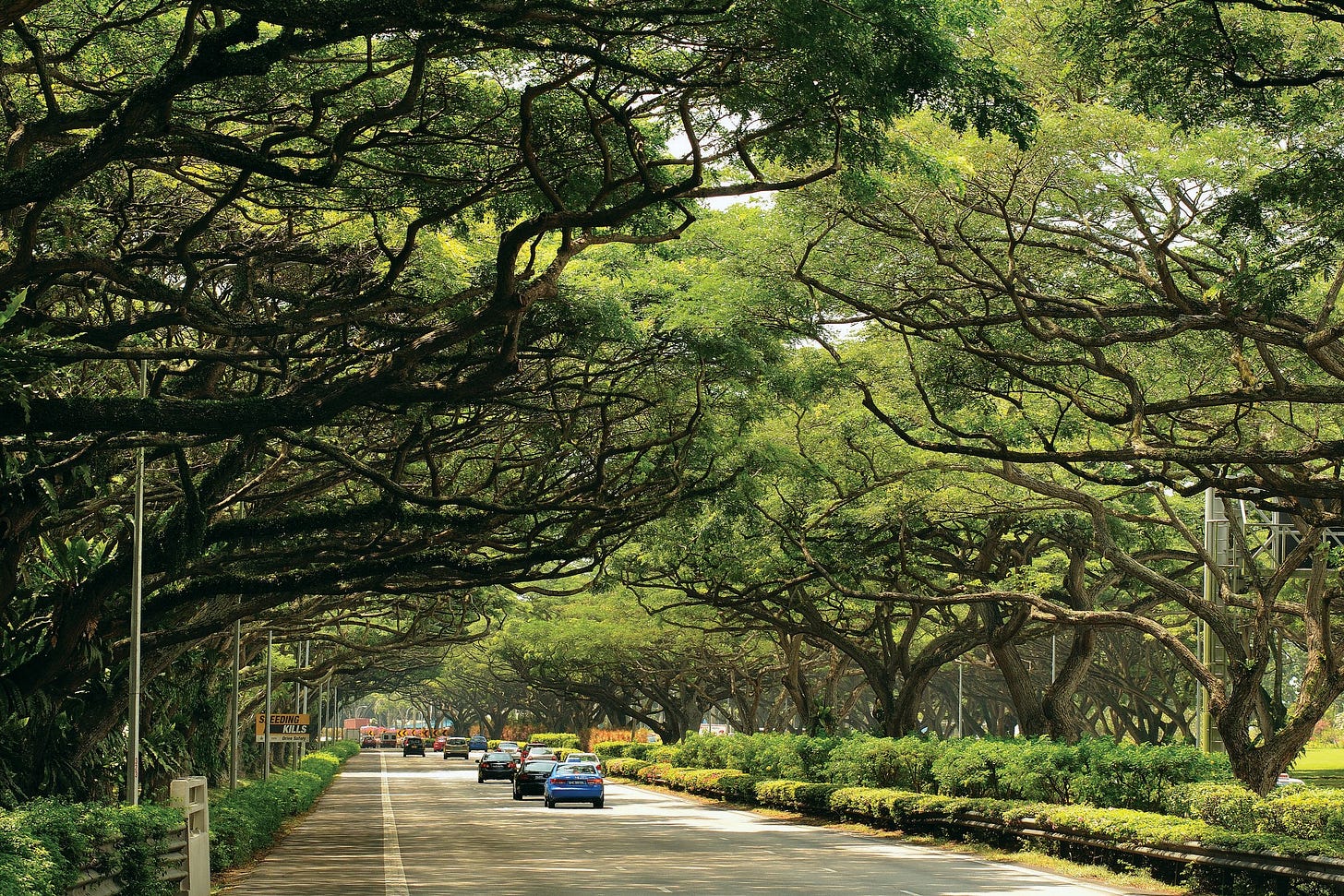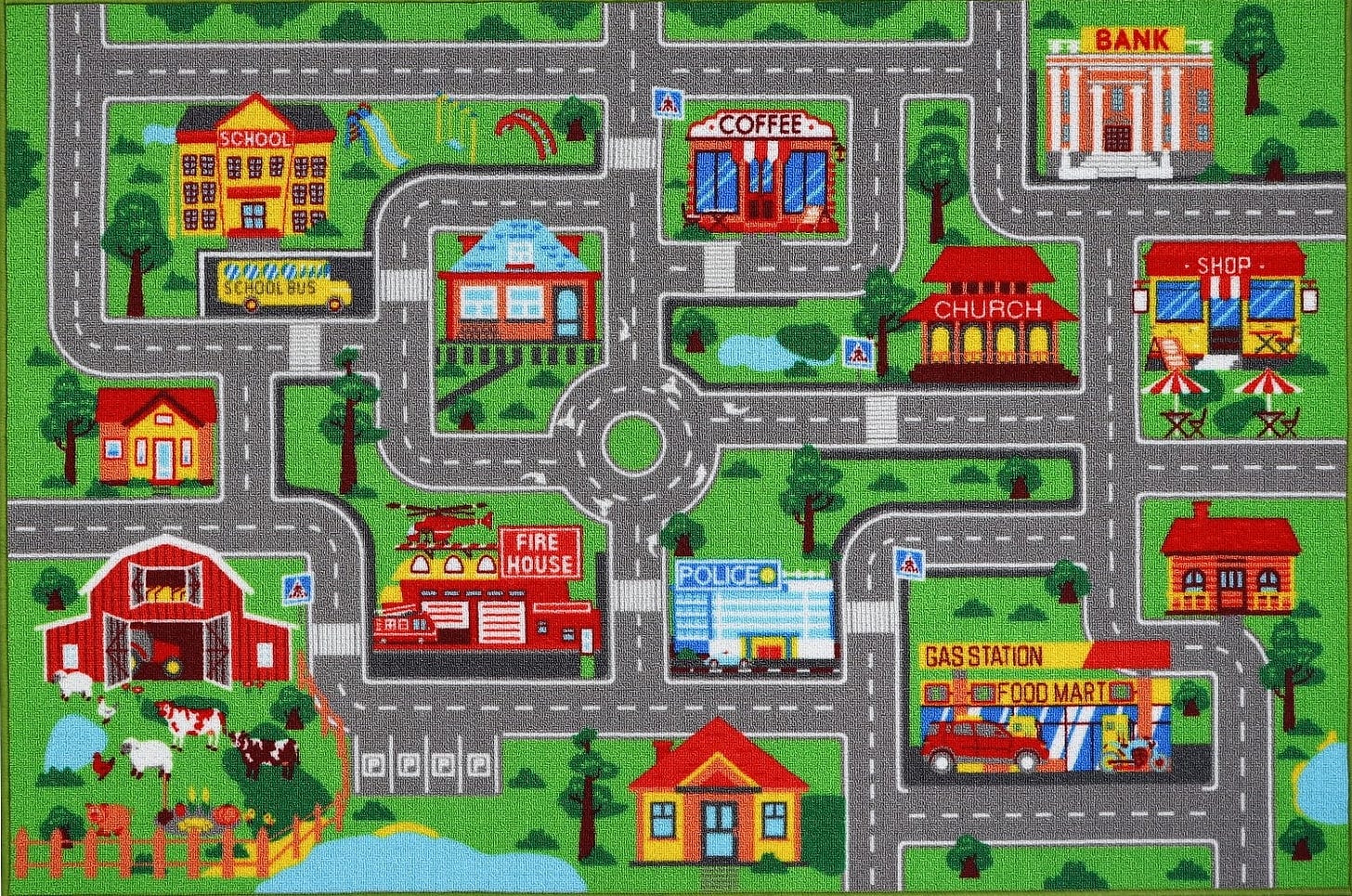28: Driving (everyone crazy) in Singapore
From the country where everything is middle of the road.
You know how water takes the path of least resistance to reach its destination? Driving in Singapore is the opposite of that.
At first glance, it all seems so orderly. Roads are clean, wide, well-maintained, clearly signed and shrouded by lush greenery. Roadworks are quick and efficient, traffic jams are kept to a minimum. It reminds me of the playmat I used to have as a kid, around which you could push toys cars in strict accordance with the highway code because birthday parties at my house were both fun and sensible.
Instead, driving in Singapore feels like all the other toddlers have stolen the cars and are racing around the lounge on a sugar high from butterscotch blancmange while I’m in the corner weeping uncontrollably. Perhaps I exaggerate slightly, and/or have unresolved childhood birthday trauma1.
Anyway, this isn’t to say that driving in Singapore is like driving in the rest of Asia, with its incessant honking, millions of mopeds, bovine bystanders and choked traffic. Instead, the reality is typically Singaporean: altogether milder and more benign.
For example, consider the signature Singapore move: when driving down the road, get slower, then even slower still, then simply come to a stop. There’s no particular reason needed: it might be to decide where you’re going, to let out a passenger, or simply to check your phone. Take your time! The rule seems to be to just stop and have a good old think about things, then carry on when you’re nice and ready.
Meanwhile, indicating is more like performance art than a navigation manoeuvre. Sometimes a car’s indicators will go on, stay on, then go off again, while the car drives in an entirely straight line. Like all great art, it’s open to interpretation. What’s absolutely certain is that indicators have no relation to cornering, which is often done with no warning at all, seemingly on a whim, or maybe as part of a u-turn.
These are a popular pastime in Singapore, which has enthusiastically adopted the one-way system. If your destination is on the other side of the road - and it always is - then you often need to drive straight past it, whistling a merry little tune at how un-irritating the world is, before doubling back via the next officially designated u-turn space. Without indicating.
To slow things down further, there are plenty of traffic lights en route, the phases of which follow a geological timescale. Entire generations of Singaporeans have been known to go extinct while waiting for a green light. But at least it allows plenty of time to check your phone again / roast a turkey / compose an opera.
Whenever you get in a car in Singapore - especially as a passenger in a taxi - there’s a high chance of experiencing the infamous pulsing-accelerator method of driving. This involves the driver repeatedly pumping the pedal so that the car jerks forward repeatedly instead of driving smoothly, an experience as enjoyable as having the back of your seat kicked on a long flight.
Theories behind this practice include that it somehow saves fuel, or that it would inflate the fare on old-fashioned taximeters2. The fact that neither of those things are true seems less important than preserving a time-honoured Singaporean tradition.
Yet for the most part, all these driving habits are met with amenable tolerance. In the UK, any of the above behaviour would result in a roadside knife fight. Yes, there is road rage in Singapore, but it’s pretty rare. There just isn’t the chance: Singapore is so small that you never have to spend that long driving anywhere. The average journey takes less than 30 minutes, half of which is spent waiting at traffic lights. Besides, if you drove for much longer you’d reach the end of the island and have to do a u-turn, at the next officially designated space, of course.
As with most things, Singapore has its own quirky way of driving. It might seem crazy, but much like our beloved one-way systems, you just have to go with it.
Mum: I’m kidding.
See this Quora page for a longer discussion.





